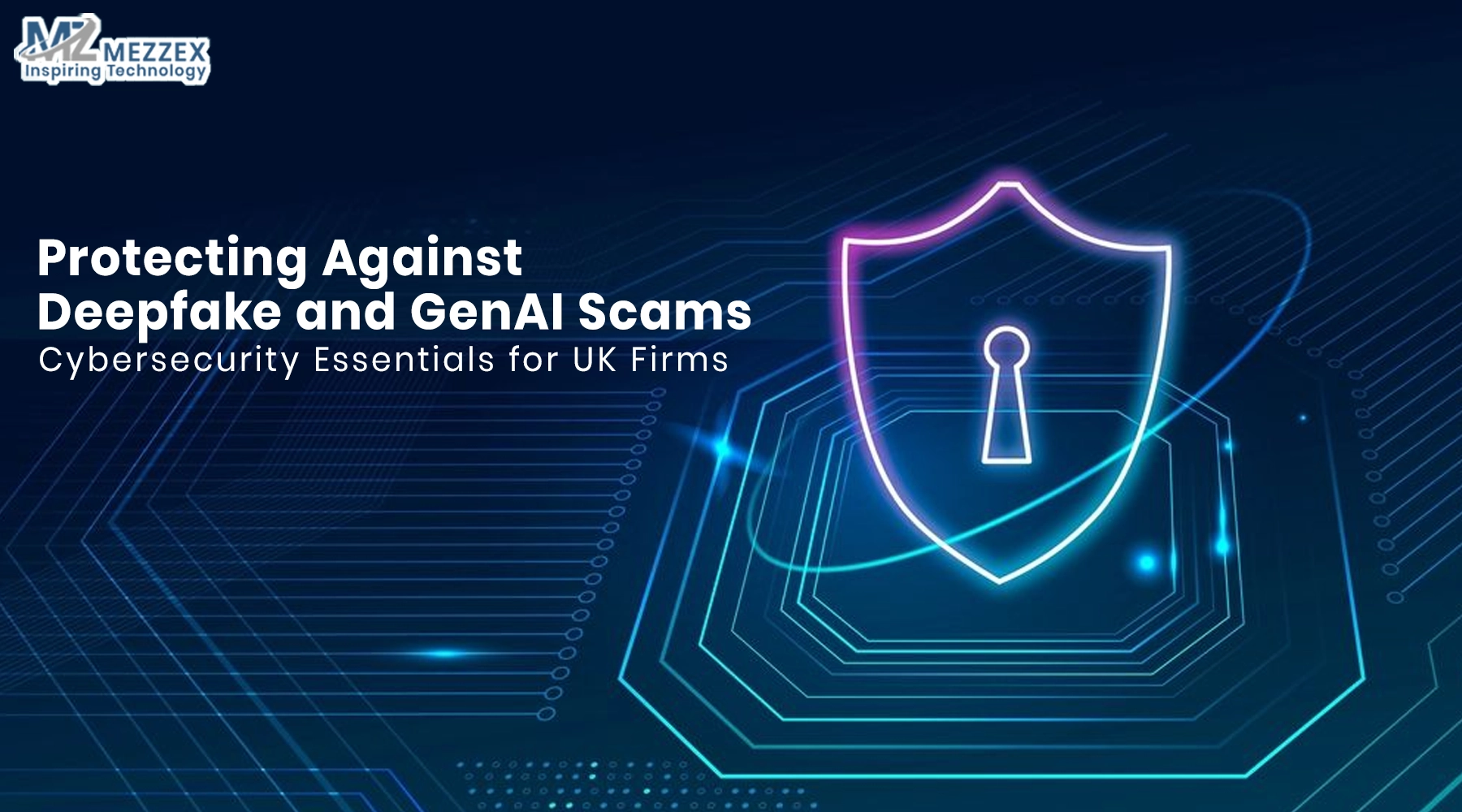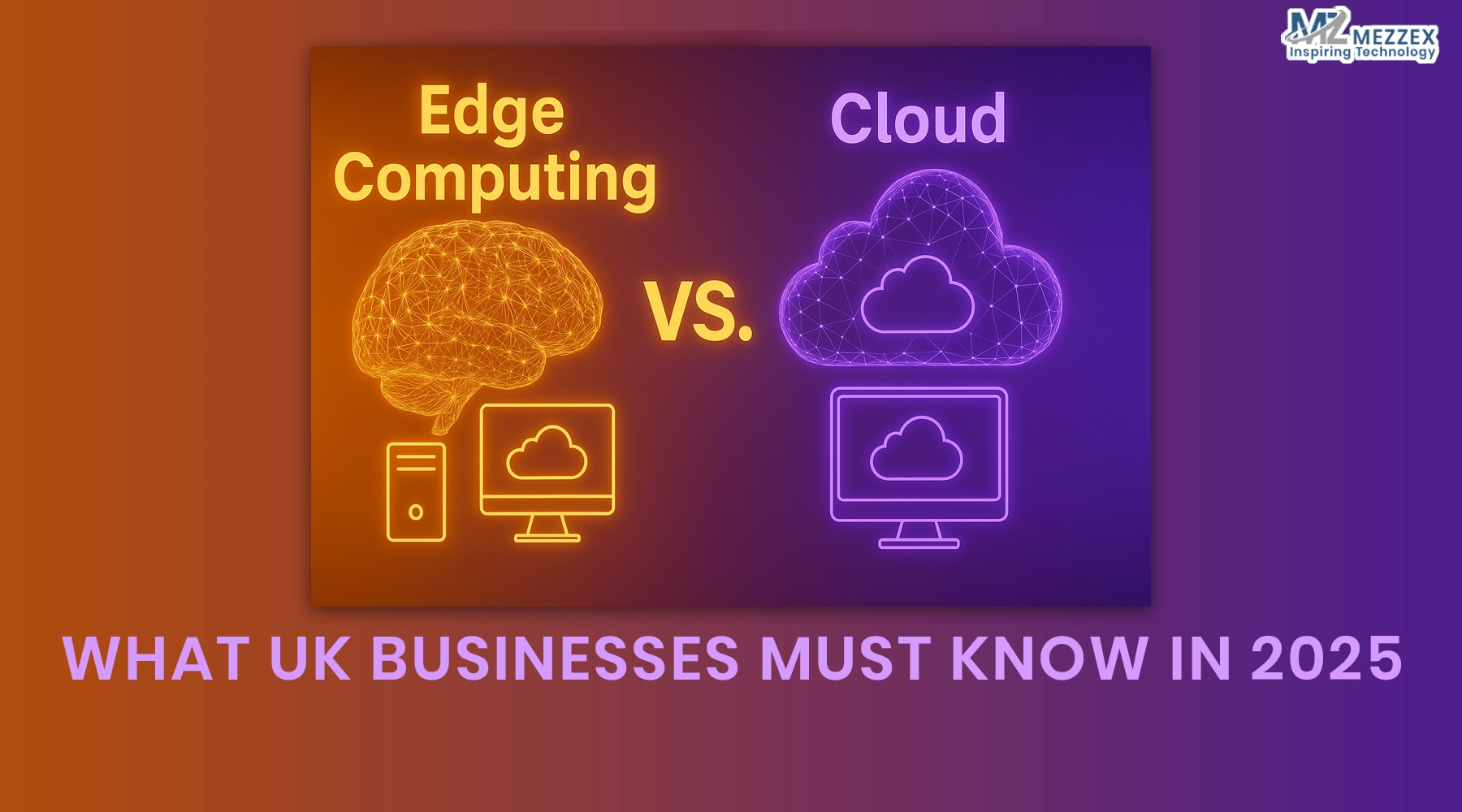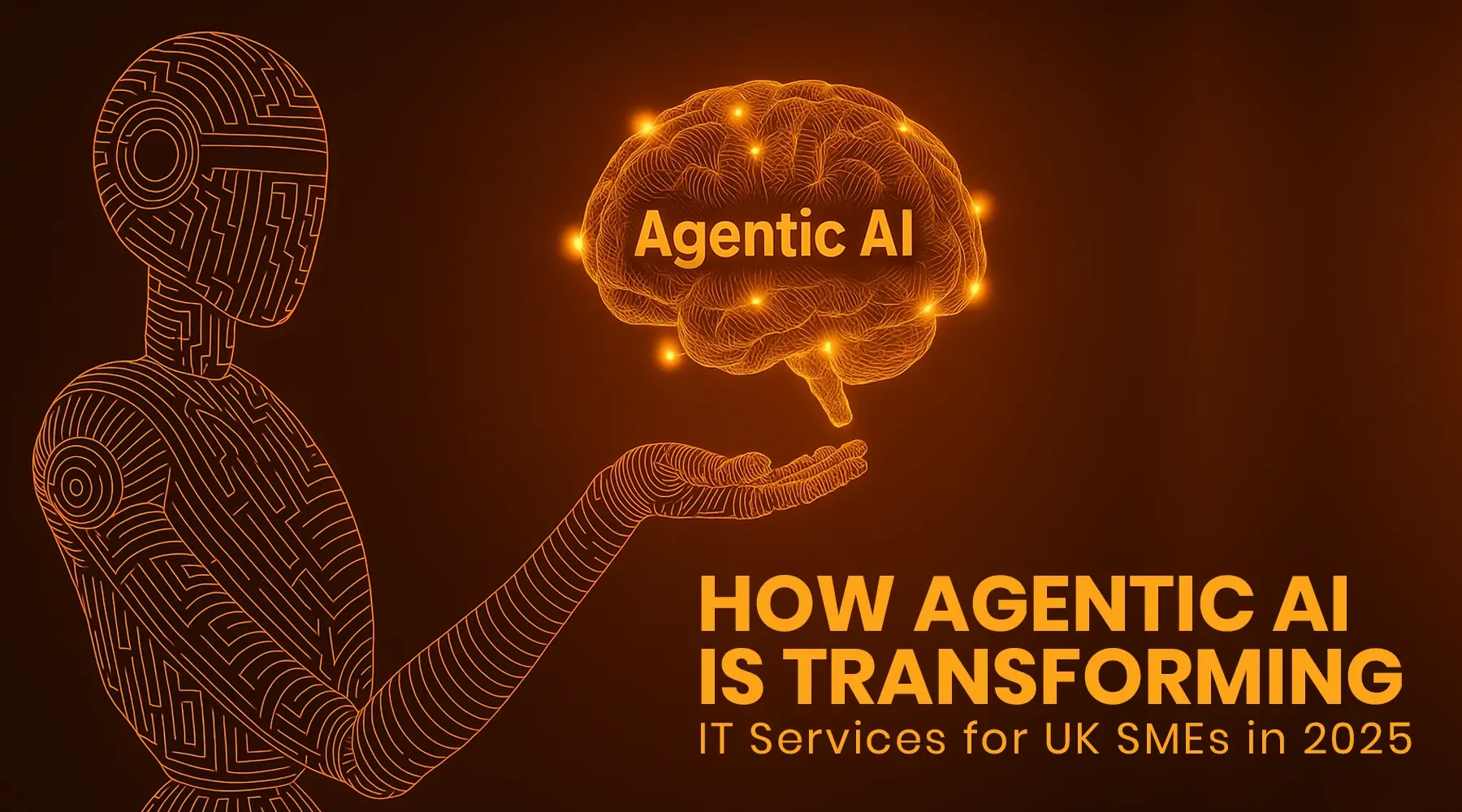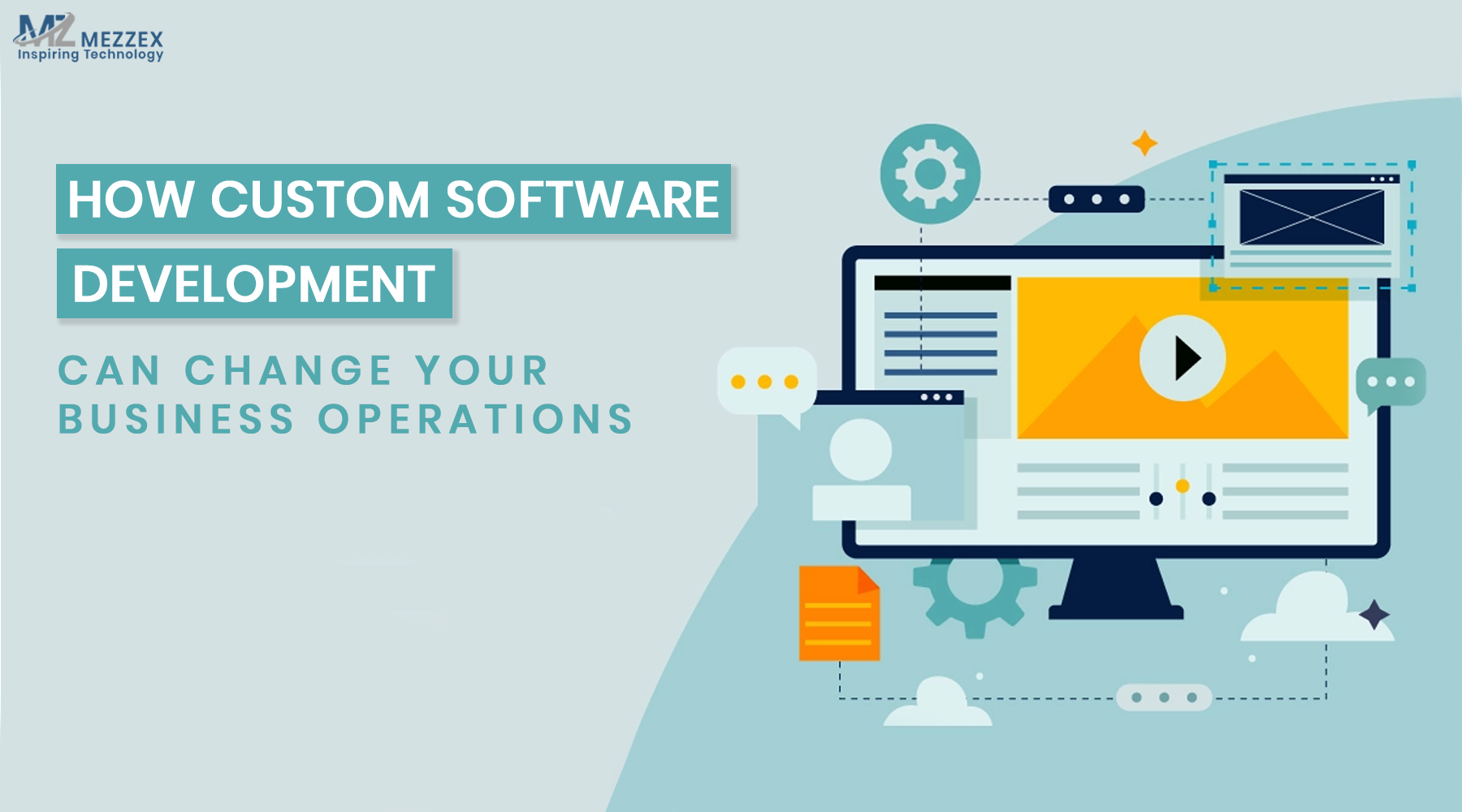
Website-Designing
Protecting Against Deepfake and GenAI Scams: Cybersecurity Essentials for Firms
Cybersecurity in 2025 is no longer just about firewalls and antivirus software. A new threat is reshaping the risk landscape—deepfake and generative AI scams that convincingly mimic human behaviour, clone voices, and produce forged video instructions with alarming precision. From fraudulent video calls impersonating CEOs to AI-generated phishing messages that reflect a colleague’s tone and writing style, UK firms are facing a sophisticated wave of digital deception. The stakes are higher than ever—both reputationally and financially. In this blog, we’ll explore how businesses can defend themselves against these emerging threats with practical cybersecurity strategies, real-world examples, and expert insight from the Mezzex team.
What Are Deepfake and Generative AI Scams?
These modern scams rely on AI to bypass traditional security systems by manipulating trust.
Deepfakes use AI to generate hyper-realistic audio or video content of real people. Attackers use this to impersonate leaders, clients, or regulators—often during critical financial or operational moments.
Generative AI scams involve language models or image generators that craft entire identities, emails, voice messages, or documents that appear completely authentic.
Common scam formats targeting firms:
Fake video calls instructing urgent payments or file access
Voice-cloned WhatsApp or Teams messages requesting transfers
AI-written procurement emails imitating suppliers or partners
Social media content used to mislead, manipulate markets, or harm reputations
These scams work not because of poor tech infrastructure—but because they exploit human trust and decision-making.
The Business Risks Are Rising Fast
Firms can no longer ignore the operational and reputational risks of synthetic fraud.
Financial loss through deception:
High-risk departments like finance and HR are often targeted with believable voice notes or emails from senior staff.
One UK energy firm lost over £200,000 in 2024 due to a voice-cloned CEO scam.
Brand damage from manipulated content:
Viral deepfake videos or AI-generated public statements can misrepresent company views or damage investor confidence.
Compliance and legal exposure:
GDPR violations may apply if deepfakes lead to the mishandling of personal or customer data.
Regulatory scrutiny is increasing, particularly in finance, healthcare, and legal sectors.
Increased insider risk:
AI makes it easier to impersonate internal staff, leading to unauthorised access, blackmail, or accidental compliance breaches.
For modern firms, deepfake fraud protection isn’t optional—it’s a frontline defence requirement.
Deepfake Fraud Protection: Key Defensive Priorities
To build resilience against deepfake fraud, firms must move from reactive to preventative.
Multi-channel verification protocols:
Never approve financial requests based on a single video or audio source.
Confirm via secure channels—email, internal portals, or face-to-face.
AI-enabled detection tools:
Use deepfake detection APIs or services such as Microsoft Video Authenticator or Reality Defender.
These tools scan media for digital fingerprints of synthetic manipulation.
Internal training with real examples:
Show staff what deepfakes look and sound like.
Build awareness around tone, timing, and irregular requests.
Limit publicly available leadership media:
Public interviews, webinars, and YouTube content are often used to train deepfake models.
Create internal guidelines for publishing or distributing executive voice and video recordings.
Incident escalation framework:
Define a response plan for suspicious digital communications.
Assign clear reporting channels and responsibilities.
Guarding Against Generative AI Scams
These scams typically target systems, processes, or communications rather than individuals. Protecting against them requires layered digital hygiene.
Email anomaly detection systems:
Use cybersecurity tools that flag inconsistencies in sentence structure, time of day, or unusual attachments. AI-written phishing emails often “look perfect”—but lack contextual logic or urgency.
Digitally signed communications:
Encourage encryption and digital signatures for all sensitive instructions or documents. This adds an extra layer of trust that is hard to replicate.
Internal identity verification tools:
Implement biometric or multi-factor authentication for internal systems—especially those handling payroll or contracts.
Tighter public exposure controls:
Monitor what personal data is publicly accessible on LinkedIn, press releases, or websites.
Restrict detailed job descriptions or contact information for staff in high-risk departments.
Emergency 'safe word' systems:
Introduce company-specific, human-only passphrases for high-risk conversations or urgent requests.
Cybersecurity Foundations to Reinforce in 2025
Cybercriminals using AI aren’t just more convincing—they’re also faster and more scalable. This makes it critical for firms to update their core cybersecurity posture.
Zero-trust architecture:
Every user and device must be verified before accessing any resource. This approach eliminates trust assumptions within internal networks.
Endpoint Detection and Response (EDR):
These tools monitor devices continuously, allowing rapid isolation of any suspicious activity.
Role-Based Access Control (RBAC):
Minimise exposure by giving employees access only to the data they need. This also limits damage from compromised accounts.
AI-specific incident response plans:
Traditional playbooks may not cover synthetic media or AI-authored fraud. Your response plans should.
Simulated attacks for staff readiness:
Run internal red team tests to expose vulnerabilities in human processes, such as urgency scams or invoice fraud.
Why Mezzex Is the Right Cybersecurity Partner
Firms need more than off-the-shelf cybersecurity software—they need a partner who understands how to embed digital defence into every layer of business technology.
Here’s how Mezzex protects forward-thinking businesses:
Cybersecurity-first design:
Every website, application, and backend system we build includes layered security, encrypted protocols, and audit-ready structures.
Custom protection for digital assets:
Whether it’s your mobile app, e-commerce platform, or client portal, we secure your infrastructure against AI-powered threats.
Strategic advisory and ongoing support:
We don't walk away after delivery. Mezzex stays involved—monitoring, upgrading, and optimising your defences as threats evolve.
Tailored services for startups, SMEs, and enterprises:
No matter your scale, we adapt cybersecurity best practices to match your risk profile and operational workflows.
With Mezzex, you’re not just building digital systems—you’re building secure, scalable futures.
Futureproof Your Business with Mezzex
Mezzex helps businesses integrate cybersecurity into the core of their digital strategy—defending against everything from deepfake attacks to generative AI scams. Ready to protect your digital future? Book a Cybersecurity Consultation today and let our experts assess your current risk exposure and deploy a tailored protection strategy. Your business deserves security built for the world of tomorrow.
Powered by Froala Editor



